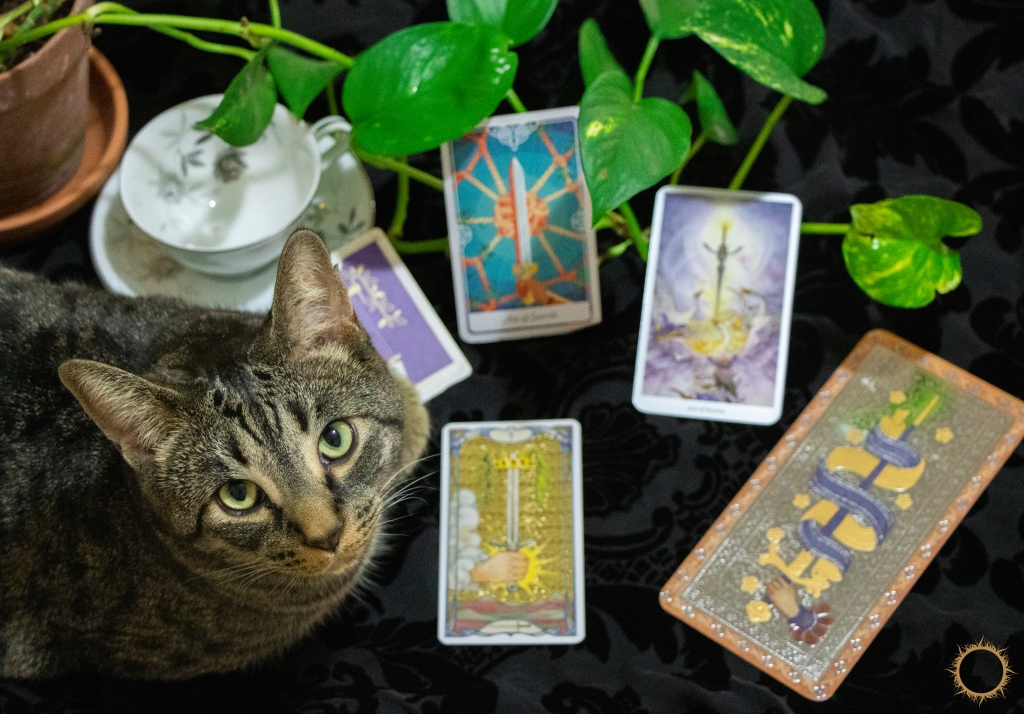
The Ace of Swords in my Medieval Scapini deck holds a very different meaning than any Rider-Smith deck I’ve ever read with. Most little white books will tell you upright means victory and reverse means defeat (usually using softened terms like “victory is not assured”). In my Medieval Scapini the upright Ace of Swords means clarity or breakthrough, reversed it means victory. How can the same card have two very different readings? This is why it’s important to train your intuition rather than relying on the books that accompany every deck, or even a well-researched Tarot Tome like Holistic Tarot.
When you are learning to read – or just got a new deck – it’s important to familiarize yourself with the images. In doing so, symbols are going to pop out that you might have missed if you go straight to the book definitions. Let’s take the Ace of Swords. Upright you can see the sword piercing through a crown: clarity, insight – makes sense to me.

But when I first drew this card reversed I was immediately struck with the handle: the image of an upright Winged Victory with a laurel crown above her head. There was just no way this card could symbolize defeat from the image I saw.

But in the Rider-Smith, the Ace of Swords reversed looks like defeat to me.

Whatever deck you read with, I always suggest keeping a journal of your readings, interpretations, and insights. And why you should always follow your intuition when it comes to tarot: your intuition is the most important skill to cultivate as you learn.